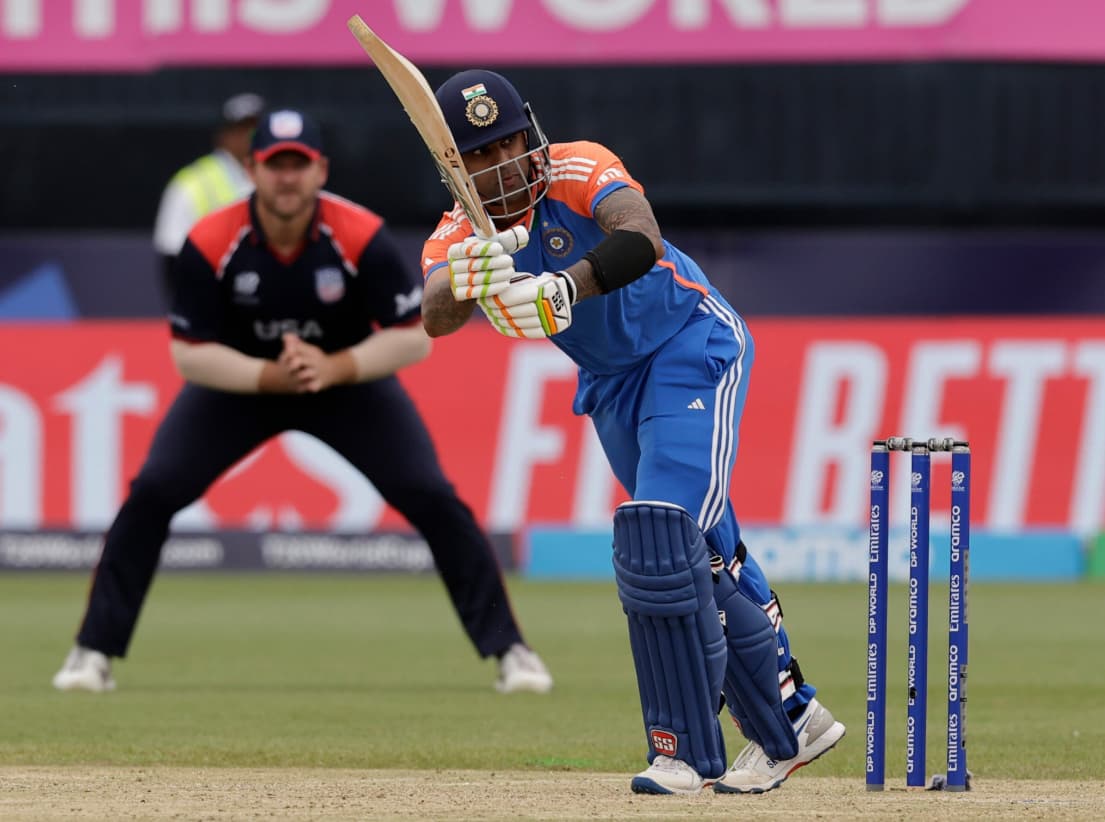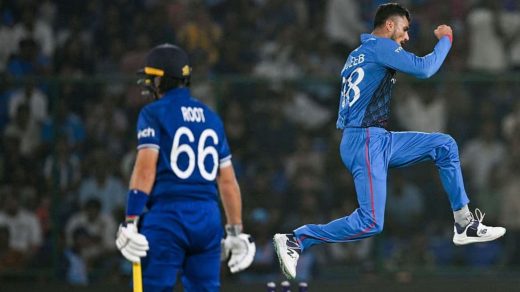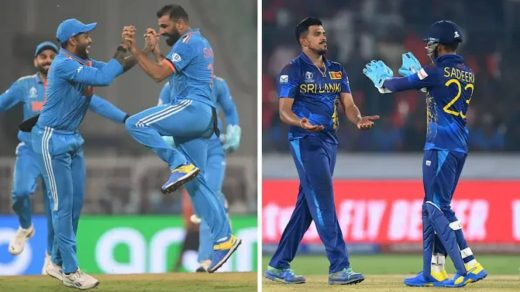Understanding the United States national cricket team vs India national cricket team match scorecard can be confusing for people who are new to cricket.
This technical learning guide explains every aspect of the match in simple terms so that anyone can understand what happened during this historic encounter.
Cricket has many rules and special terms that might seem difficult at first, but once you learn the basics, it becomes very exciting to follow.
This guide will teach you how to read scorecards, what different statistics mean, why certain decisions were made, and how cricket matches work in general.
We’ll break down each moment of the USA vs India match and explain why things happened the way they did.
Whether you’re an American trying to understand cricket or someone who wants to learn more about international cricket, this guide will give you all the knowledge you need.
United States National Cricket Team vs India National Cricket Team Match Scorecard

By the end of this article, you’ll be able to read any cricket scorecard and understand what makes a good cricket performance.
Understanding Cricket Basics: What You Need to Know
Before we dive into the match details, let’s understand how cricket works. Cricket is played between two teams of 11 players each.
One team bats first (tries to score runs) while the other team bowls and fields (tries to stop runs and get batsmen out). In T20 cricket, each team gets exactly 20 overs to bat. An over consists of 6 balls (deliveries) bowled by one bowler.
Basic Cricket Terms:
- Runs: Points scored by hitting the ball and running
- Wickets: Ways to get batsmen out
- Overs: Sets of 6 balls bowled by one bowler
- Strike Rate: How fast a batsman scores (runs per 100 balls)
- Economy Rate: How many runs a bowler gives per over
- Boundaries: 4 runs (ball reaches boundary) or 6 runs (ball crosses boundary in air)
Match Format and Rules: T20 Cricket Explained
| T20 Cricket Rules | Details | Why It Matters |
|---|---|---|
| Overs per Team | 20 overs maximum | Creates fast-paced, exciting cricket |
| Time Duration | About 3-4 hours total | Perfect for TV and busy schedules |
| Players per Team | 11 players each | Balanced team with specialists |
| Powerplay Rules | First 6 overs – only 2 fielders outside the circle | Encourages aggressive batting |
| Bowling Limits | Maximum 4 overs per bowler | Prevents one bowler from dominating |
| Strategic Timeout | 2.5 minutes break per team | Teams can plan a strategy |
USA Team Analysis: Understanding Their Performance
The USA cricket team consists of players from different backgrounds. Some players were born in America, while others moved to the USA from cricket-playing countries. This mix of experience helps the team, but also creates challenges in team chemistry.
| USA Player Profiles | Background | Role in Team | Experience Level | Key Strengths |
|---|---|---|---|---|
| Steven Taylor | American-born | Top-order batsman | Moderate | Steady batting |
| Shayan Jahangir | Pakistani origin | Opening batsman | Good | Aggressive style |
| Andries Gous | South African origin | Wicket-keeper | High | Keeping skills |
| Aaron Jones (C) | Barbadian origin | Captain, all-rounder | Very high | Leadership |
| Nitish Kumar | Indian origin | Middle-order bat | Good | Attacking cricket |
| Corey Anderson | Ex-New Zealand | All-rounder | Very high | International experience |
| Saurabh Netravalkar | Indian origin | Fast bowler | High | Swing bowling |
USA Batting Technical Analysis: What Went Wrong
The USA batting performance had several technical problems that cricket experts noticed during the match.
| Technical Issues | Problem Description | Impact on Score | How to Fix |
|---|---|---|---|
| Slow Start | The first 6 overs scored only 25 runs | Lost momentum early | Be more aggressive in the powerplay |
| Dot Ball Problem | Too many balls without scoring | Pressure builds up | Rotate the strike more often |
| Partnership Breaks | No big partnerships formed | Score never accelerated | Better communication between batsmen |
| Boundary Shortage | Only 5 boundaries in the entire innings | Very low scoring rate | Practice power hitting |
| Running Issues | Missed several quick single opportunities | Lost easy runs | Improve fitness and calling |
Detailed USA Batting Performance Card
| Batsman | Time at Crease | Dot Balls Faced | Scoring Shots | Pressure Moments | Technical Analysis |
|---|---|---|---|---|---|
| Shayan Jahangir | 1 ball | 1 | 0 | Very high – our first ball | Poor shot selection |
| Steven Taylor | 50 minutes | 20 | 10 | Medium – anchored innings | Too defensive an approach |
| Andries Gous | 8 minutes | 3 | 2 | High quick dismissal | Rushed his shots |
| Aaron Jones | 35 minutes | 16 | 6 | Medium – captain’s responsibility | Needed to stay longer |
| Nitish Kumar | 30 minutes | 8 | 15 | Low – played well | Best batting technique |
| Corey Anderson | 18 minutes | 4 | 8 | Medium – quick acceleration | Good intent, poor execution |
| Harmeet Singh | 15 minutes | 6 | 4 | High-tail-ender role | Tried his best |
India Bowling Technical Breakdown: Masterclass Performance
India’s bowling attack showed world-class skills and perfect planning against the USA batsmen. Each bowler had a specific role to play.
| Bowling Analysis | Arshdeep Singh | Hardik Pandya | Mohammed Siraj | Jasprit Bumrah |
|---|---|---|---|---|
| Bowling Style | Left-arm swing | Medium pace variations | Right-arm pace | Right-arm express |
| Main Weapon | Swing and yorkers | Slower balls | Bounce and pace | Yorkers and variations |
| Target Areas | Stumps and pads | Change of pace | Short balls | Perfect length |
| Success Rate | Excellent (4 wickets) | Very good (2 wickets) | Good (tight bowling) | Excellent (economical) |
| Match Impact | Match-winner | Perfect support | Built pressure | Contained scoring |
Wicket-by-Wicket Technical Analysis
| Wicket | Delivery Type | Batsman Error | Bowler Skill | Field Placement | Learning Point |
|---|---|---|---|---|---|
| 1st – Jahangir | Yorker length | Late on a shot | Perfect execution | Close catchers ready | Always be ready for the first ball |
| 2nd – Gous | Short ball | Rushed pull shot | Good bouncer | Deep fielder placed | Don’t hurry your shots |
| 3rd – Jones | Slower ball | Early in the shot | Change of pace | Mid-wicket trap | Watch the ball carefully |
| 4th – Taylor | Arm ball | Played the wrong line | Spin variation | Stumps exposed | Play straight |
| 5th – Kumar | Good length | Aggressive shot | Disciplined bowling | Safe catching position | Choose your moments |
India Batting Technical Excellence: How Champions Chase
When India came to bat, they showed exactly how to chase a small target in T20 cricket. Their approach was calculated and professional.
| Batting Phase | Overs | Strategy | Key Players | Run Rate | Risk Level |
|---|---|---|---|---|---|
| Phase 1 | 1-6 | Careful start | Rohit, Kohli | 6.0 per over | Low |
| Phase 2 | 7-12 | Build momentum | Pant, Suryakumar | 6.5 per over | Medium |
| Phase 3 | 13-18 | Finish the job | Suryakumar, Dube | 6.0 per over | Low |
| Phase 4 | 19-20 | Not needed | – | – | – |
USA Bowling Analysis: Learning Opportunities
The American bowlers faced a huge challenge bowling to world-class Indian batsmen. Here’s how they performed:
| Learning Points | What the USA Did | What Worked | What Didn’t Work | Improvement Areas |
|---|---|---|---|---|
| Line and Length | Mixed results | Some good spells | Too many loose balls | Need more consistency |
| Pressure Building | Tried hard | Occasional dot balls | Couldn’t sustain pressure | Bowl in partnerships |
| Field Setting | Basic placements | Standard fields | No innovative plans | Study batsmen weaknesses |
| Bowling Changes | Limited options | Used all bowlers | No surprise element | Develop bowling variations |
| Death Bowling | No experience | Some yorkers attempted | Lack of skill | Practice specific skills |
Complete Match Timeline: Moment by Moment
| Time | Event | Score | Impact | Crowd Reaction |
|---|---|---|---|---|
| 12:30 PM | Toss won by India | 0-0 | India chose to bowl | Cheers from Indian fans |
| 1:00 PM | USA innings starts | 0-0 | Jahangir faces the first ball | The stadium is full of excitement |
| 1:01 PM | First wicket falls | 0-1 | Worst possible start | Shock in the American section |
| 1:45 PM | USA reaches 50 | 50-3 | Fighting back slowly | Mixed reactions |
| 2:30 PM | USA innings ends | 110-8 | Below par total | Indian fans confident |
| 3:00 PM | India chase begins | 0-0 | Rohit and Kohli open | Huge expectations |
| 4:15 PM | India wins | 111-3 | Comfortable victory | Celebrations begin |
Statistics That Tell the Story
| Performance Metrics | USA Team | India Team | Difference | Explanation |
|---|---|---|---|---|
| Total Runs | 110 | 111 | 1 run | Shows how small margins matter |
| Boundaries Hit | 5 | 8 | 3 more | Power hitting difference |
| Dot Ball % | 52% | 35% | 17% more | Pressure and skill difference |
| Average Partnership | 12.2 runs | 22.2 runs | 10 runs | Building innings ability |
| Strike Rate | 88.7 | 104.7 | 16 points | Scoring speed difference |
| Bowling Economy | 6.05 | 5.50 | 0.55 runs | Bowling accuracy difference |
Team Comparison: Strengths and Weaknesses
| Aspect | USA Strengths | USA Weaknesses | India Strengths | India Weaknesses |
|---|---|---|---|---|
| Batting | Fighting spirit | Lack of boundaries | All-round depth | Early wickets vulnerability |
| Bowling | Netravalkar’s swing | Limited variations | Multiple quality options | None visible |
| Fielding | Good ground fielding | Catching pressure | Sharp and athletic | None in this match |
| Experience | Local knowledge | International pressure | World-class experience | Possible overconfidence |
| Strategy | Simple plans | Limited options | Multiple tactical options | None needed |
Future Development Areas for USA Cricket
| Development Need | Current Level | Target Level | Action Required | Timeline |
|---|---|---|---|---|
| Power Hitting | Beginner | Intermediate | Specialized coaching | 1-2 years |
| Bowling Variations | Basic | Advanced | Skills development | 2-3 years |
| Fielding Standards | Good | Excellent | Fitness and practice | 6 months |
| Match Experience | Limited | Extensive | More international games | 3-5 years |
| Team Chemistry | Developing | Strong | Time and matches together | 1-2 years |
Cricket Format Comparison: Why T20 is Different
| Format | Duration | Strategy | Skills Needed | Entertainment Value |
|---|---|---|---|---|
| Test Cricket | 5 days | Patience and endurance | Technical perfection | Purist appeal |
| ODI Cricket | 8 hours | Balance of attack/defense | All-round skills | Traditional excitement |
| T20 Cricket | 3 hours | Aggressive and fast | Power and innovation | Maximum entertainment |
Frequently Asked Questions:
- Q: Why did India choose to bowl first after winning the toss?
A: In T20 cricket, teams often prefer to chase targets because they know exactly how many runs they need to score and can plan accordingly.
- Q: What does “economy rate” mean in bowling?
A: Economy rate shows how many runs a bowler gives away per over. Lower numbers are better for bowlers.
- Q: Why do some batsmen have higher strike rates?
A: Strike rate shows how fast a batsman scores. In T20 cricket, faster scoring (higher strike rate) is usually better.
- Q: What makes a good T20 cricket team?
A: Good T20 teams need power hitters, accurate bowlers, athletic fielders, and smart captains who make quick decisions.
- Q: How is cricket different from baseball?
A: Cricket has longer games, different scoring, 11 players per team, and bowlers instead of pitchers who bounce the ball.
Key Learning Points from This Match
For New Cricket Fans:
- Small targets can still be challenging to chase
- Bowling accuracy is more important than bowling fast
- Partnerships between batsmen are crucial for big scores
- Field placement plays a big role in cricket strategy
- Mental pressure affects player performance significantly
For USA Cricket Development:
- International experience is invaluable for growth
- Technical skills need constant improvement
- Playing against top teams shows areas to work on
- Home support gives teams extra motivation
- Learning from defeats is part of the journey
Also Check:
- India National Cricket Team vs Netherlands National Cricket Team Match Scorecard
- India National Cricket Team Vs South Africa National Cricket Team Match Scorecard
- India National Cricket Team Vs Zimbabwe National Cricket Team Match Scorecard
Conclusion: Building Cricket Knowledge Through Analysis
This technical breakdown of the United States National Cricket Team vs India National Cricket Team match scorecard shows that cricket is much more than just numbers on a scoreboard.
Every ball bowled, every run scored, and every wicket taken has a story behind it. Understanding these technical aspects helps us appreciate the skill, strategy, and mental strength required to play international cricket.
The USA team may have lost this match, but they gained valuable experience that will help them improve in future games.
Cricket development takes time, and every match is a learning opportunity. For new cricket fans, this match provides a perfect example of how different skill levels create different results.
Most importantly, this guide shows that cricket can be understood by anyone willing to learn the basics.
Whether you’re an American discovering cricket for the first time or someone from a cricket-playing country wanting to understand better, the technical aspects of the game make it more enjoyable to watch and follow.
The future looks bright for both USA cricket and international cricket as new countries join the global cricket family and bring fresh excitement to this beautiful game!



